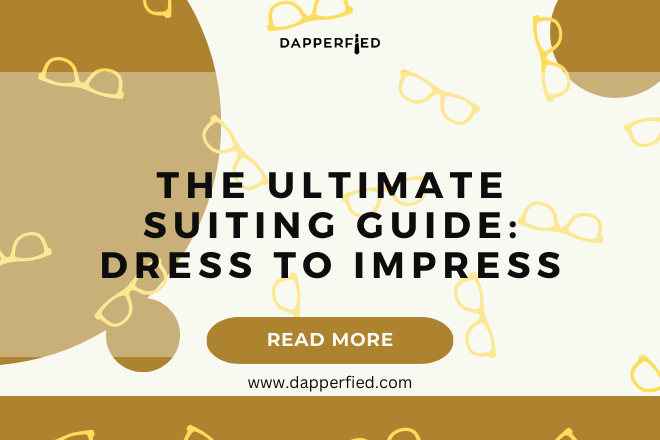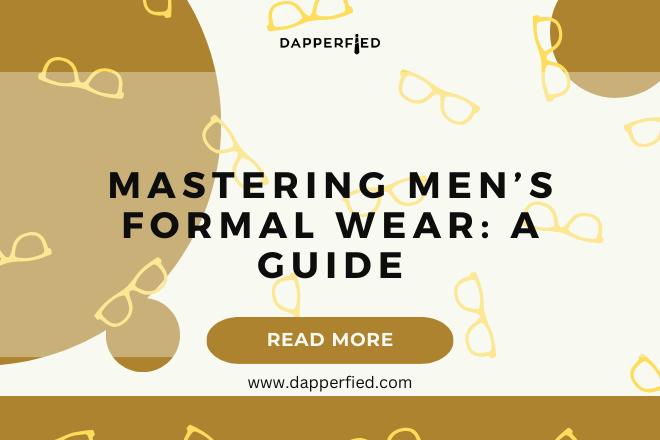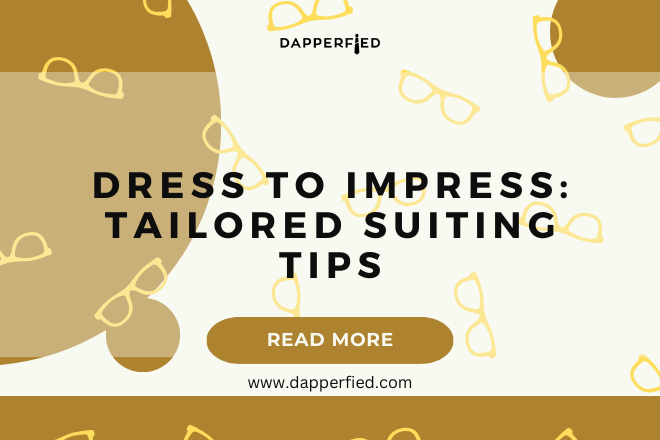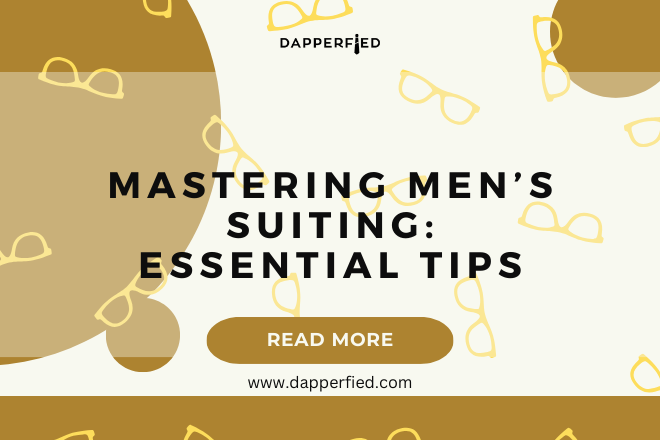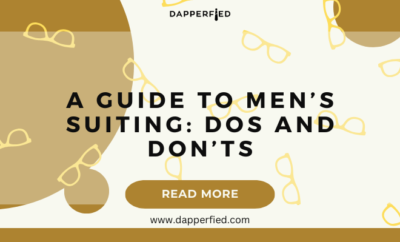
Men's Style
Mastering Men’s Suit Shopping: Essential Tips
Dressing well is an essential aspect of presenting oneself in a professional and polished manner. A well-fitted suit can make a significant difference in one’s professional and personal life. Whether it’s for a job interview, a business meeting, or a special occasion, wearing the right suit can boost confidence and leave a lasting impression. Mastering the art of men’s suit shopping is crucial for every man who wants to look his best and make a statement.
Key Takeaways
- Mastering men’s suit shopping is important for a polished and professional look.
- Choose the perfect suit by considering fit, style, and occasion.
- Understanding different suit styles and fabrics can help you make informed decisions.
- Tailoring is key to achieving the perfect fit for your suit.
- Proper care and maintenance of your suit is essential for longevity and continued wear.
Suit Selection Tips: How to Choose the Perfect Suit for You
When selecting a suit, it is important to consider factors such as body type, skin tone, and personal style. Each individual has unique features and preferences that should be taken into account when choosing the right suit. For example, individuals with a slim build may opt for slim-fit suits that accentuate their physique, while those with a larger build may prefer regular or classic-fit suits that provide more comfort.
In addition to body type, skin tone is another important factor to consider when selecting a suit. Certain colors and patterns can complement different skin tones. For individuals with fair skin, lighter shades such as light gray or beige can create a balanced and sophisticated look. On the other hand, individuals with darker skin tones can opt for bolder colors such as navy blue or charcoal gray to enhance their complexion.
Personal style is also crucial when choosing a suit. Some individuals prefer classic and timeless styles, while others may opt for more modern and trendy designs. It is important to choose a suit that reflects one’s personal style and makes them feel confident and comfortable.
Men’s Suiting Styles: Understanding the Different Types of Suits
There are various types of suits available, each with its own unique style and purpose. The most common types include single-breasted suits, double-breasted suits, and three-piece suits.
Single-breasted suits are the most versatile and widely worn type of suit. They feature a single row of buttons down the front and are suitable for both formal and casual occasions. Single-breasted suits can be worn with or without a tie, making them a versatile option for different events.
Double-breasted suits, on the other hand, feature two rows of buttons on the front. They are known for their more formal and traditional look. Double-breasted suits are often worn for special occasions such as weddings or black-tie events. They provide a more structured and sophisticated appearance.
Three-piece suits consist of a jacket, trousers, and a waistcoat. They are considered the epitome of formal wear and are typically worn for very formal occasions such as weddings or high-profile business events. Three-piece suits offer a classic and elegant look, adding an extra layer of sophistication to one’s attire.
Tailored Suit Guide: How to Get the Perfect Fit
| Measurement | Ideal Range | Acceptable Range |
|---|---|---|
| Chest | 36-40 inches | 34-42 inches |
| Waist | 30-34 inches | 28-36 inches |
| Hip | 36-40 inches | 34-42 inches |
| Shoulder | 17-19 inches | 16-20 inches |
| Sleeve Length | 32-34 inches | 30-36 inches |
| Pant Length | 30-32 inches | 28-34 inches |
| Thigh | 22-24 inches | 20-26 inches |
| Inseam | 30-32 inches | 28-34 inches |
Getting a suit tailored to fit one’s body is essential for achieving a polished and professional look. A well-fitted suit enhances one’s silhouette and ensures comfort throughout the day. When getting a suit tailored, it is important to consider factors such as shoulder width, sleeve length, jacket length, and trouser length.
To measure oneself for a suit, start by measuring the shoulder width from one end to the other. This measurement should be taken from the outer edge of each shoulder. Next, measure the sleeve length by starting at the shoulder seam and measuring down to the desired length. The jacket length should be measured from the base of the collar to the desired length, typically just above the knee. Finally, measure the trouser length by starting at the waistband and measuring down to the desired length.
When getting a suit tailored, it is important to communicate with the tailor about any specific preferences or adjustments needed. A good tailor will be able to provide guidance and recommendations based on individual body type and style.
Suit Buying Tips: What to Look for When Shopping for Suits
When shopping for suits, it is important to try them on before making a purchase. This allows individuals to assess the fit, comfort, and quality of the suit. When trying on a suit, pay attention to the fit of the shoulders, chest, waist, and trousers.
The shoulders should fit snugly without any excess fabric or pulling. The chest should have enough room to allow for movement without being too loose or too tight. The waist should be fitted but not constricting, allowing for ease of movement. The trousers should sit comfortably at the waist and have a slight break at the top of the shoes.
In addition to fit, it is important to assess the quality of the suit. Look for well-constructed seams, quality fabric, and attention to detail. A high-quality suit will not only look better but will also last longer.
Men’s Formal Wear: Dressing for Special Occasions


In addition to everyday suits, there are various types of formal wear that are appropriate for special occasions. Tuxedos and dinner jackets are two common options for formal events.
Tuxedos are typically worn for black-tie events such as weddings or galas. They consist of a black jacket with satin lapels, matching trousers with a satin stripe down the side, and a formal dress shirt with a bow tie. Tuxedos provide a classic and elegant look that is suitable for the most formal occasions.
Dinner jackets, also known as smoking jackets, are less formal than tuxedos but still appropriate for semi-formal events. They are typically worn with a dress shirt and a bow tie or necktie. Dinner jackets offer a more relaxed and stylish alternative to traditional formal wear.
Fabric and Material Guide: Understanding the Different Types of Suit Fabrics
The choice of fabric is an important aspect of selecting a suit. Different fabrics offer different levels of comfort, breathability, and durability. The most common suit fabrics include wool, cotton, and linen.
Wool is the most popular fabric for suits due to its versatility and durability. It is a natural fiber that provides excellent insulation and breathability. Wool suits are suitable for year-round wear and can be found in various weights and weaves.
Cotton suits are lightweight and breathable, making them ideal for warmer climates or summer events. They offer a more casual and relaxed look compared to wool suits. Cotton suits are available in different colors and patterns, allowing for more versatility in styling.
Linen suits are perfect for hot weather due to their lightweight and breathable nature. They offer a relaxed and casual look that is suitable for outdoor events or beach weddings. Linen suits tend to wrinkle easily, so they require more maintenance and care.
Accessorizing Your Suit: Choosing the Right Tie, Shoes, and Accessories
Accessorizing a suit is an important aspect of completing the overall look. The right tie, shoes, and accessories can enhance the style and sophistication of a suit.
When choosing a tie, it is important to consider the color, pattern, and fabric. The tie should complement the suit while adding a touch of personality. Solid-colored ties are versatile and can be paired with various suit colors and patterns. Patterned ties can add visual interest to a plain suit, while textured ties can provide depth and dimension.
Shoes should be chosen based on the formality of the occasion and the color of the suit. Black shoes are the most versatile option and can be worn with any suit color. Brown shoes are a more casual alternative that pairs well with navy or brown suits. It is important to ensure that the shoes are clean, polished, and in good condition.

Accessories such as pocket squares, cufflinks, and belts can add a finishing touch to a suit. Pocket squares should complement the tie and add a pop of color or pattern. Cufflinks should be chosen based on personal style and the formality of the occasion. Belts should match the color and style of the shoes.
Caring for Your Suit: Tips for Maintaining and Cleaning Your Suit
Caring for a suit is essential to ensure its longevity and maintain its appearance. Suits should be properly stored, cleaned, and maintained to keep them looking their best.
When not in use, suits should be hung on wooden or padded hangers to maintain their shape. Avoid using wire hangers, as they can cause the shoulders to lose their shape. Suits should be stored in a cool and dry place to prevent moisture and mildew.
Cleaning a suit should be done sparingly to avoid unnecessary wear and tear. Spot cleaning can be done using a damp cloth or sponge to remove small stains. Dry cleaning should only be done when necessary, as it can cause the fabric to lose its luster over time. It is important to follow the care instructions provided by the manufacturer.
Regular maintenance such as brushing off lint or dust and steaming out wrinkles can help keep a suit looking fresh and polished. It is also recommended to rotate suits to allow them to rest between wears, which helps maintain their shape and prevent excessive wear.
Mastering Men’s Suit Shopping for a Polished and Professional Look
Mastering the art of men’s suit shopping is crucial for every man who wants to present himself in a polished and professional manner. A well-fitted suit that complements one’s body type, skin tone, and personal style can make a significant difference in one’s professional and personal life.
By following the tips provided in this article, individuals can choose the perfect suit that fits them perfectly, enhances their appearance, and boosts their confidence. Understanding different suit styles, fabrics, and accessories allows individuals to create a versatile wardrobe that can be adapted to various occasions.
Investing time and effort into mastering men’s suit shopping is a worthwhile endeavor that can have a lasting impact on one’s overall image and success. So, take the time to find the perfect suit and enjoy the benefits of looking and feeling your best.
If you’re looking for more tips on men’s style, check out this informative article on deciphering young men’s style. It offers three valuable tips to help you navigate the world of fashion and make confident choices when it comes to your wardrobe. Whether you’re a young professional or simply want to stay up-to-date with the latest trends, this article is a must-read. For more expert advice on men’s fashion, be sure to explore the other articles on Dapperfied, such as their guide to buying men’s wedding suits and their review of the Raymond Weil Men’s 2847-STC-20001 Maestro Analog Display Swiss Automatic Black Watch.
FAQs
What should I consider when buying a men’s suit?
When buying a men’s suit, you should consider the fit, fabric, style, and occasion. The fit should be tailored to your body type, the fabric should be appropriate for the season and occasion, the style should match your personal taste, and the occasion should dictate the level of formality.
What are the different types of men’s suit styles?
The different types of men’s suit styles include single-breasted, double-breasted, three-piece, and tuxedo. Single-breasted suits have one row of buttons, while double-breasted suits have two rows. Three-piece suits include a vest, and tuxedos are typically worn for formal events.
What is the best fabric for a men’s suit?
The best fabric for a men’s suit depends on the season and occasion. Wool is a popular choice for year-round wear, while cotton and linen are better for warmer weather. For formal occasions, silk or velvet may be appropriate.
How should a men’s suit fit?
A men’s suit should fit snugly but not be too tight. The jacket should fit well in the shoulders and chest, with the sleeves ending at the wrist bone. The pants should fit comfortably in the waist and hips, with a slight break at the ankle.
What accessories should I wear with a men’s suit?
Accessories that can be worn with a men’s suit include a dress shirt, tie, pocket square, belt, and dress shoes. The tie and pocket square should complement the suit, while the belt and shoes should match in color and style.

